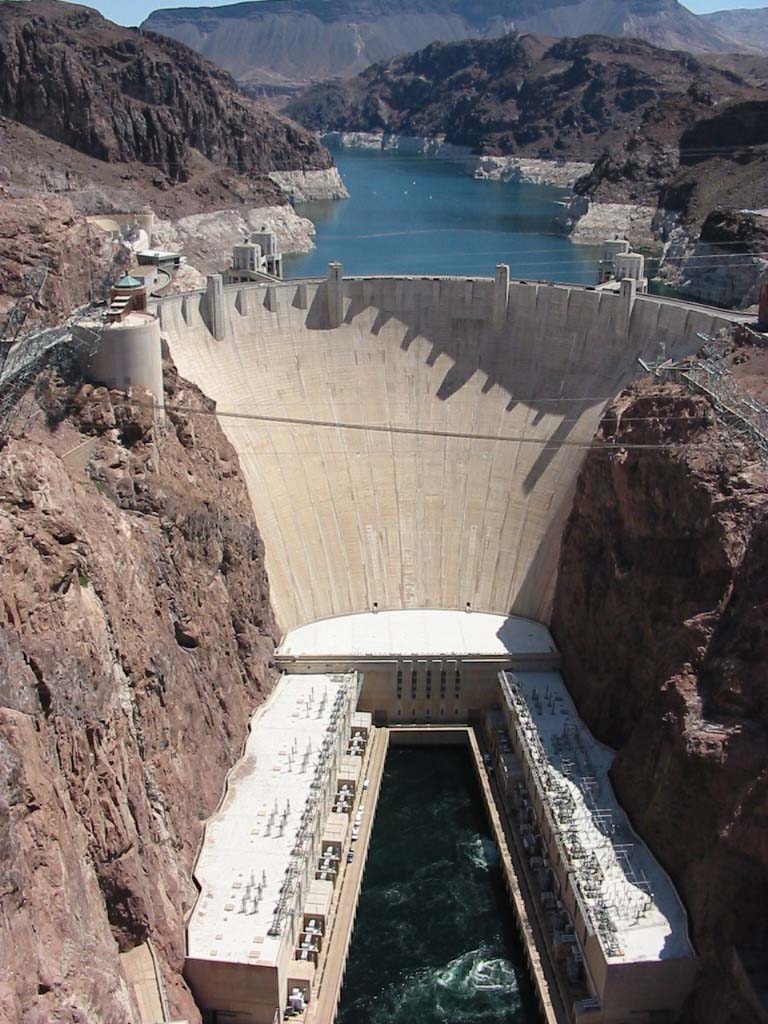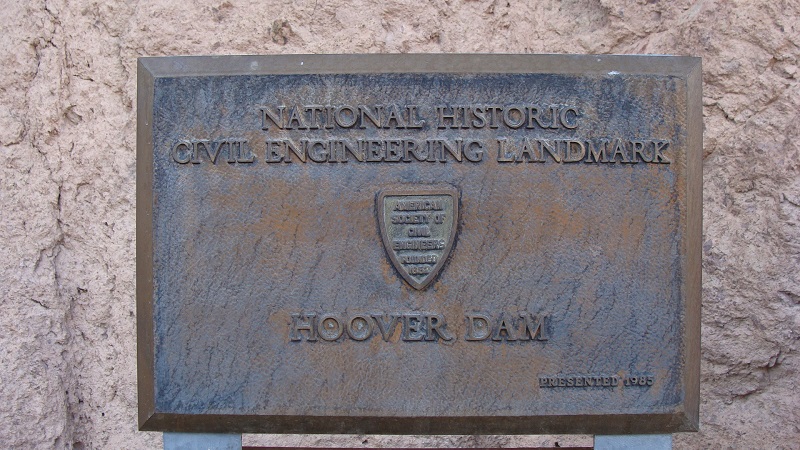Hoover Dam
36 00 57.7 N
114 44 14.8 W

The Hoover Dam, a 726-foot high-arch gravity structure, was the greatest constructed project at that time and remains one of the highest concrete dams in the Western Hemisphere.
In 1918, the U.S. Reclamation Service's director and chief engineer Arthur P. Davis proposed a dam of unprecedented height to control the devastating floods on the Colorado River, generate hydroelectric power, and store the river's ample waters for irrigation and other uses. A dam project of this monumental scale had never been built in America: diverting the Colorado River through four massive tunnels blasted out of hard rock; pouring 6.6 million tons of concrete to build the world's largest concrete dam; and building two giant spillways and four intake towers - all in a remote desert region.
In March 1931, the Bureau of Reclamation awarded the contract to a consortium of six large construction firms, called Six Companies, Inc., that bid together on the project because it was larger than any one could handle. Francis T. Crowe, Hon.M.ASCE was construction superintendent for Six Companies, Inc. and probably one of the premier dam construction engineers who ever worked in the United States. Working around the clock, they completed the dam two years ahead of schedule.
Facts
- Four 56-foot-diameter tunnels were driven through the canyon walls - 2 on either side - to divert the Colorado River around the dam work site. Ultimately, more than 1,500,000 cubic yards of soil and rock were removed from the tunnels.
- The dam is an arch gravity structure rising 726 feet above bedrock. It is 660 feet thick at its base, 45 feet thick at its crest, and stretches 1,244 feet across Black Canyon.
- Construction of the dam, powerhouse, and related structures required a total of 4,400,000 cubic yards of concrete, 45,000,000 pounds of reinforcing steel. The size of much of the equipment - including generators and steel plate penstock - was unparalleled.
- To dissipate the heat generated as the concrete cured, over 650 miles of one-inch pipe were embedded in the concrete to convey refrigerated water. The cooling coils were cut off and filled with grout after each block had cured and cooled.
- On September 30, 1935, Franklin D. Roosevelt officially dedicated the dam, saying, "I came, I saw, and I was conquered, as everyone will be who sees for the first time this great feat of mankind."
- The inscription at the base of the Hoover Dam flagpole reads, "It is fitting that the flag of our country should fly here in honor of those men who, inspired by a vision of lonely lands made fruitful, conceived this great work and of those others whose genius and labor made that vision a reality."

Resources
- Joseph Stevens, Hoover Dam: An American Adventure , University of Oklahoma Press (1988)
- PBS American Experience, Hoover Dam , video
- Patty Sullivan, A Pictorial History of Hoover Dam , Draco Publishing (1999)

